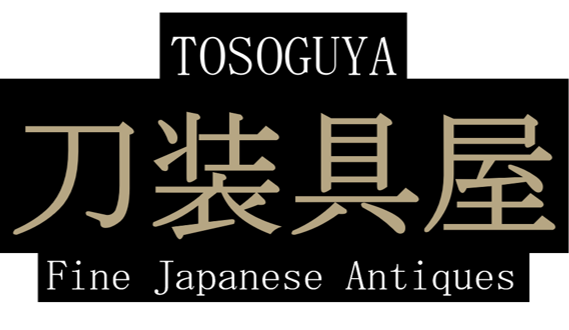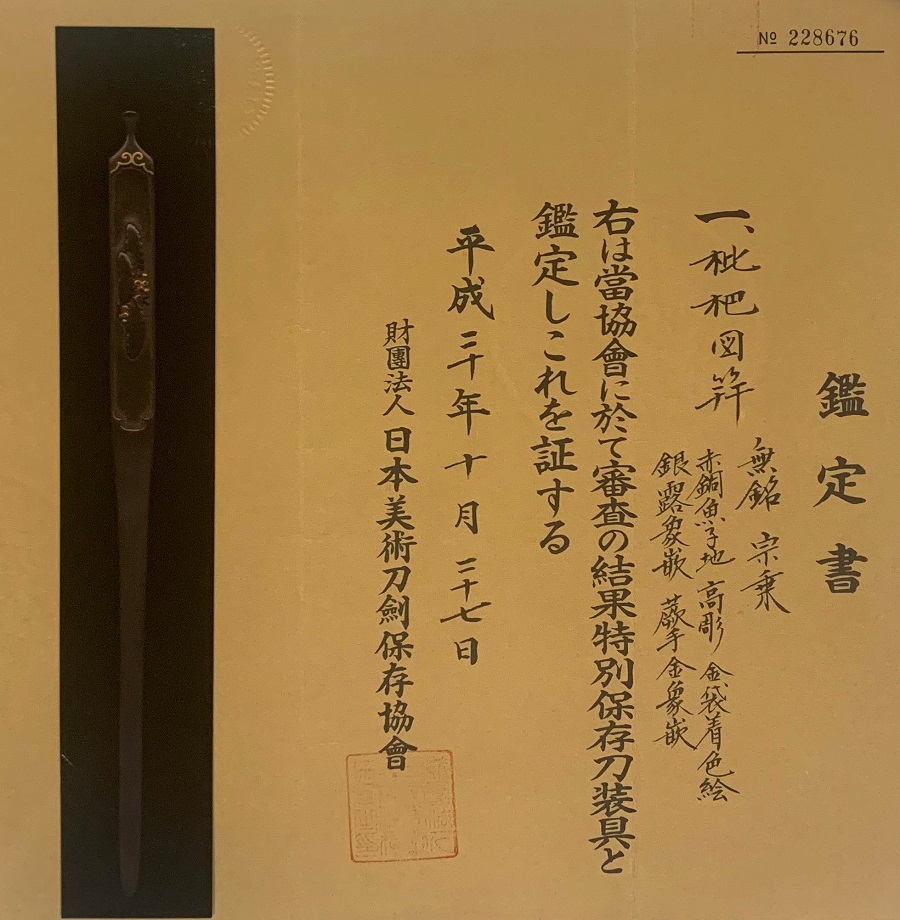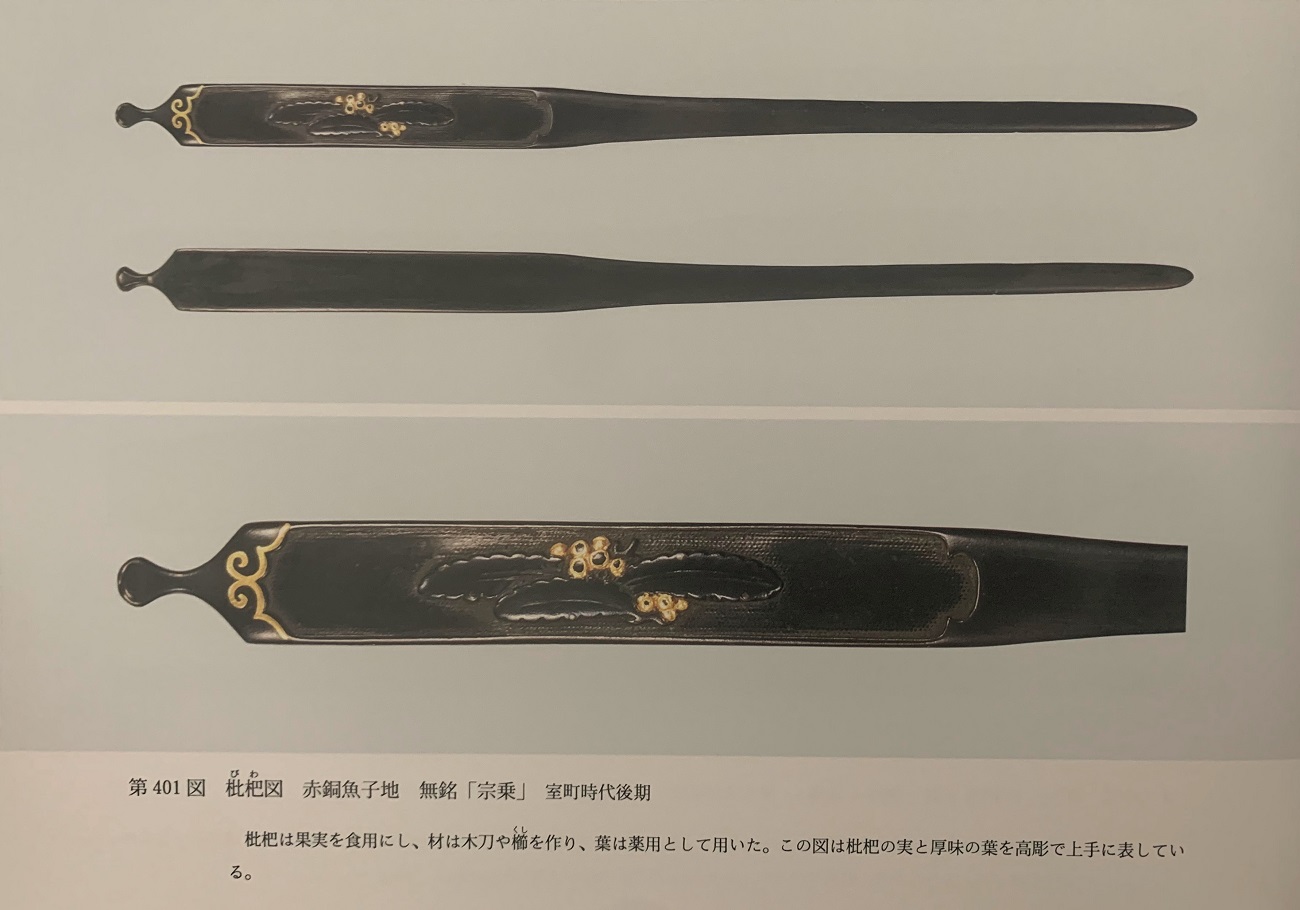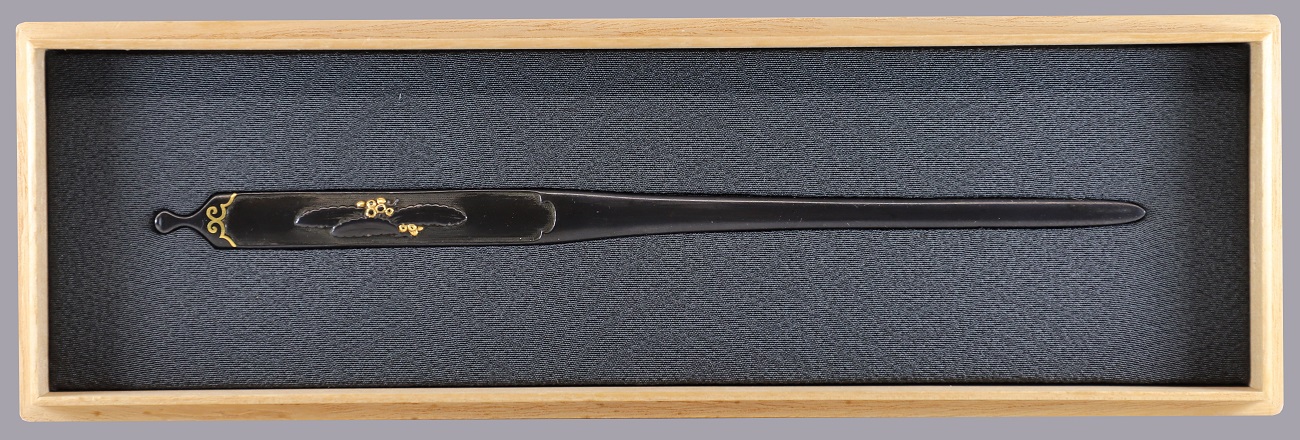

Lovely old kōgai attributed to Gotō Sōjō (宗乗) (1461 - 1538), the 2nd mainline master of the Shirobei branch of the Gotō family of sword furniture makers. Sōjō is functionally the first accessible master of the Gotō school, as works by his father Yūjō are extremely rare. This early Goto lineage, Yūjō, Sōjō and Jōshin represent the 'golden age' of the school, and their works are always highly sought after, becoming cornerstones of any serious tōsōgu collection. Sōjō's work is more delicate than than that of Jōshin, and he often worked in the highest grade shakudo, with a deep, purple black patina. In profile, the carving is often gentle, with soft sweeping lines and relatively low relief. The standoff of the carved motif is often barely higher than the top surface of the kogai. Sōjō used gold uttori application liberally in his work, and they often present with lovely wide window's throught the gold foil, to the black shakudo underneath. The color contrast cn be quite striking. The early Gotō never signed their works, so attribution is made through experience, and sometimes through attestation by later members of the Gotō lineage.
The motif is of loquats or Biwa (枇杷), with the fruits covered in gold uttori. Loquats are a symbol of wealth or prosperity and good luck. Their fruit is often naturally a golden yellow, to the association is understandable. Sōjō employed silver ten-zōgan (点象嵌) dot inlay in 5 places to represent early morning dew drops or tsuyu (露) on the leaves. All the dots at the leaf edges, giving the impression that the dew has beaded, and is about to roll-off the leaf. This subtle motif element is understated and charming, invoking images of a warm sunny morning, following a cool spring night.
The kogai is made of black shakudō (赤銅), with a very finely punched background of nanako (魚子地), with selective application of gold foil, in a technique called uttori (うっとり), where the gold is mechanically overlain, and affixed in very fine furrows around the edges of the motif. The artist would sometimes purposely remove areas of the gold foil to show windows to the base metal below. The fine nanako on the plate is worn down outside of the high relief motif, and along the edges. This is a normal characteristic of such old kogai. Gold inlay remains on the warabite (蕨手), the decorative curvilinear carvings toward the back of the kōgai. The NBTHK Tokubetsu Hozon papers use an alternate term for uttori, in this case, kanabukuro-kise iroe (金袋着色絵), which literally means 'application of a gold bag [coloration]'. The motif itself is a executed in high relief or takabori (高彫).
I am honored to be able to offer this piece, along with a highly complimentary kogai by Sōjō's son, Jōshin, here. Take the time to compare and contrast the pieces, it's educational.
Translation of the Hozon paper description follows:
枇杷図笄 (Biwa no zu kōgai)
無銘 宗乗 (Mumei Sōjō)
赤銅 魚子地 高彫 金袋着色絵 (Shakudō nanako-ji takabori
kanabukuro-kise iroe)
Heisei 20th year (2008) November 27th
Ex-Tosogu Bijutsukan Museum and Ikeda Suematsu Collection
Published: Ko-Kōgai. Ikeda Suematsu and Miyake Teruyoshi. 1997. pg. 432
Measurements: 21.2cm x 1.26cm x 0.45cm
Late Muromachi Period (室町後期時代), early 16th century
SOLD


